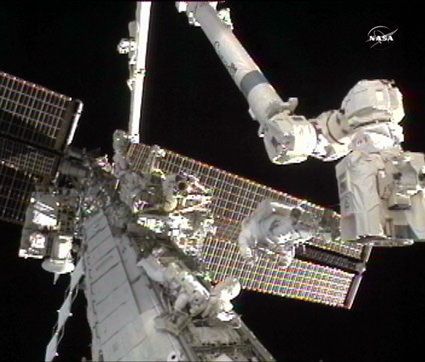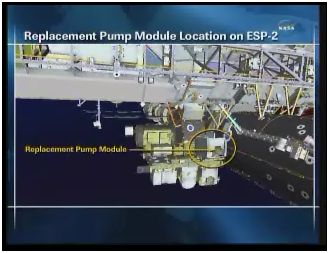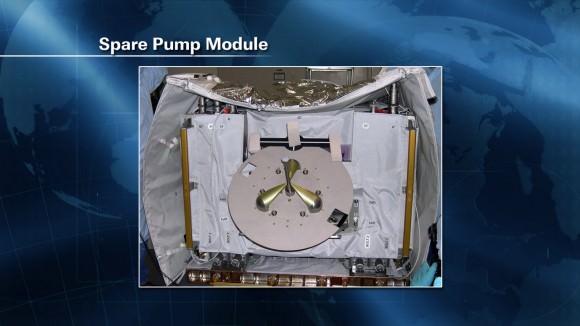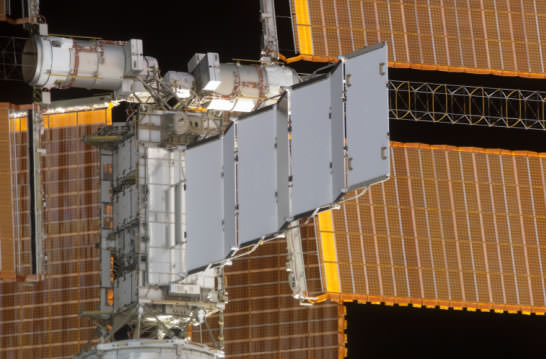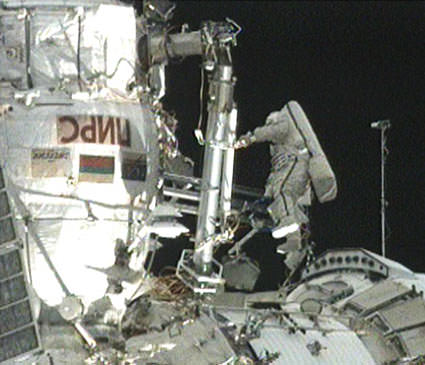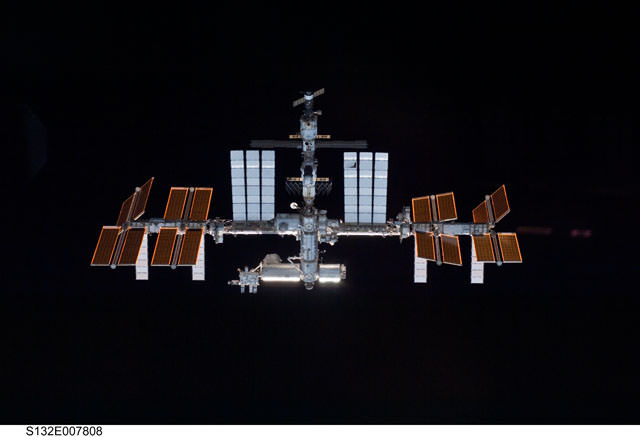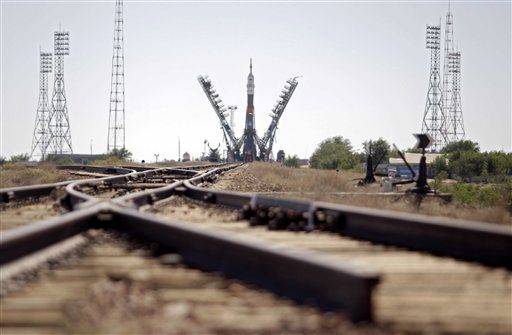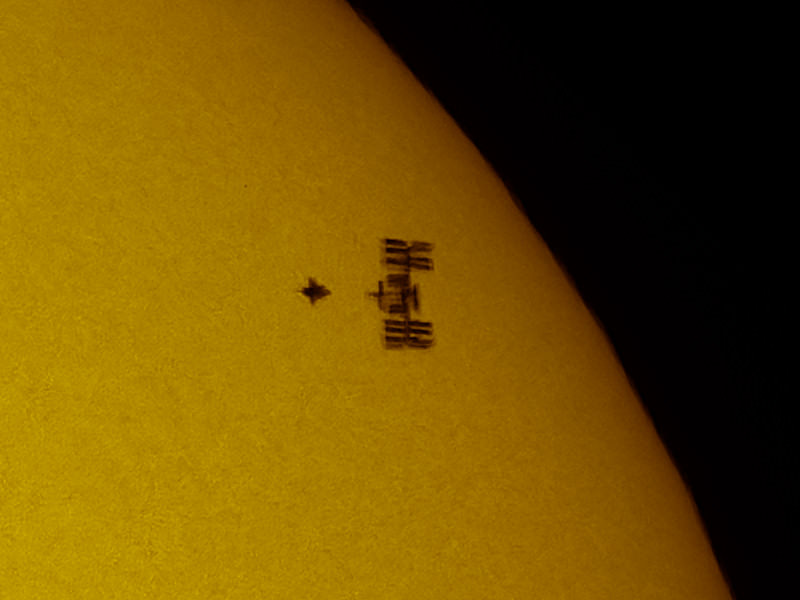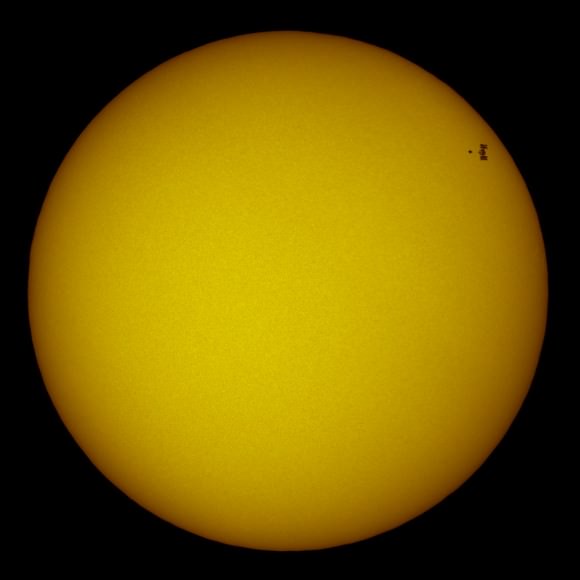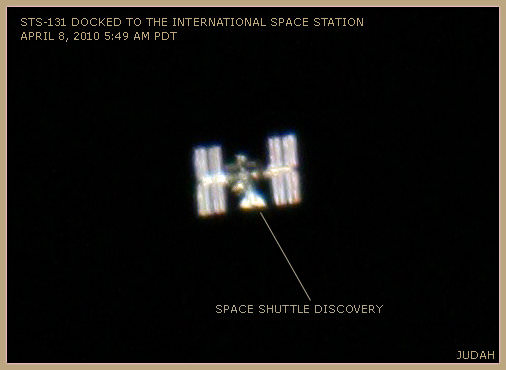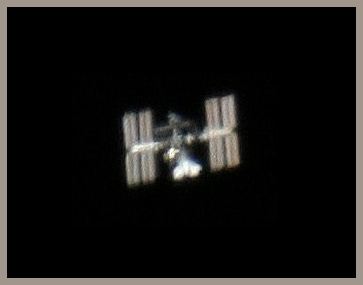[/caption]
Overcoming a disappointing spacewalk last weekend, today astronauts Doug Wheelock and Tracy Caldwell Dyson successfully removed the failed ammonia coolant pump module on the S1 truss of the International Space Station. But NASA managers said that at least two more EVAs will be required to complete all the repairs to the critical cooling system. Earlier, it was hoped that two spacewalks total would allow enough time, but it will take at least four. “There were a number of challenges in the first EVA that set us back, but as we looked closer at this, we were hedging our bets at how many EVAs we had ahead of us,” said Spacewalk officer David Beaver at a press briefing following the successful EVA today. “As we have done more and more work in laying this out in a stepwise fashion, it became clear to us early on that this was a much bigger set of EVAs than we originally made time for.”
He added that on orbit, the astronauts have stopped all research in order to save on the cooling system. The complex systems keeps the station from overheating and the six-member crew has relied on just one — instead of the usual two pumps –to handle the cooling ever since the one pump failed during a power surge on July 31.
“The system has been kind to us and we haven’t had any more failures,” Beaver said.
The spare pump will be installed on the S1 truss during a spacewalk that is now scheduled for Monday – originally it was set for Sunday, but NASA managers decided an extra day would help both the astronauts and the teams on the ground preparing for the EVAs.
Wheelock and Caldwell Dyson were able to close the quick disconnect valve for the final fluid connector for the failed ammonia pump module, and then detach the final fluid line from the failed ammonia pump module – which was the problem that couldn’t be overcome on the first spacewalk.
The two astronauts then extracted the pump module and stowed on another location on the truss, and Caldwell Dyson prepared the spare pump for installation on the next spacewalk on Monday.
The spacewalk lasted 7 1/2 hours, slightly shorter than Saturday’s eight-hour marathon, the longest EVA at the ISS without a space shuttle present. Wheelock and Dyson had to use decontamination procedures after the spacewalk just in case some ammonia leaked on their suits.
In response to the power-saving reconfiguration that has had to be done, the science team worked quickly to establish a plan to preserve experiment samples in the Japanese Experiment Module freezer. The on-orbit crew was able to transfer all the samples from the freezer in the Kibo laboratory to an operating freezer. No sciences samples were lost due to the pump module anomaly.
While the crew schedule has been interrupted to support the newly added spacewalks, the payload ground teams have been working closely with mission controllers to preserve and re-plan high priority activities. Other activities that can be rescheduled with little or no impact are being postponed to a later date.

